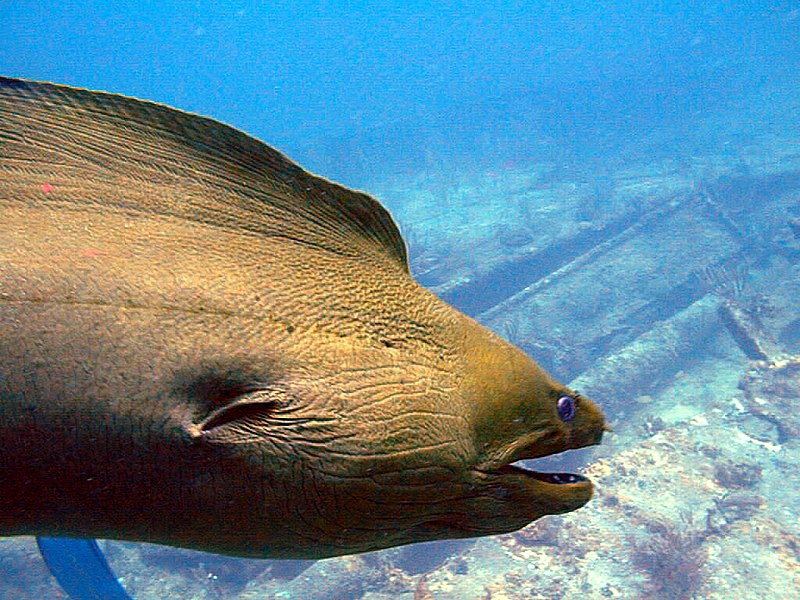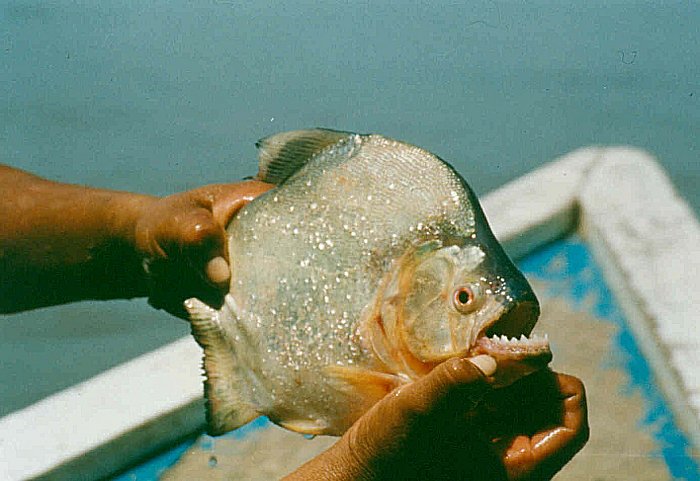 Hello, Sam here with another small fish profile. Fish from the group of known as the basslets are mostly small, solitary species that are great candidates for smaller tanks. These fish are related to the much larger basses. Two species of fish that I particularly enjoy from this group of fish are the Chalk basslet (Serranus tortugarum) and the Tobacco Basslet (Serranus tabacarius). Both of these fish are found in the Caribbean and are normally imported around 3 inches in length. Read More »
Hello, Sam here with another small fish profile. Fish from the group of known as the basslets are mostly small, solitary species that are great candidates for smaller tanks. These fish are related to the much larger basses. Two species of fish that I particularly enjoy from this group of fish are the Chalk basslet (Serranus tortugarum) and the Tobacco Basslet (Serranus tabacarius). Both of these fish are found in the Caribbean and are normally imported around 3 inches in length. Read More »
From Fin to Leg – Did a Mutation Help Ancient Fishes Conquer Land?
 Hello, Frank Indiviglio here. If you stare long enough at a Lungfish or Mudskipper (as I have, often causing my co-workers to wonder…), it’s easy to picture a similar creature leaving an ancient sea and setting forth to explore the land in the distant past. Indeed, evolutionary biologists tell us that a fish very much like today’s Australian Lungfish (Neoceratodus fosteri) did pull off such a feat some 360 million years ago, thereby setting the stage for the rise of the amphibians, reptiles, birds and mammals. Read More »
Hello, Frank Indiviglio here. If you stare long enough at a Lungfish or Mudskipper (as I have, often causing my co-workers to wonder…), it’s easy to picture a similar creature leaving an ancient sea and setting forth to explore the land in the distant past. Indeed, evolutionary biologists tell us that a fish very much like today’s Australian Lungfish (Neoceratodus fosteri) did pull off such a feat some 360 million years ago, thereby setting the stage for the rise of the amphibians, reptiles, birds and mammals. Read More »
Another “D’oh!” Moment – The Eel Incident
After Jose’s blog in May about some of our coworker’s mishaps and misadventures, I’ve been badgered and teased (again) about what we refer to around here as “the eel incident”, one of my own prize foibles that Jose had forgotten when he wrote his blog. Since he wants to tell all of you anyway, here it is in my words….
 Along the back wall of our fish room, we have two large coral tanks side-by-side. Now they are coral tanks, but at the time of this incident, we used them for particularly large or aggressive saltwater fish. In the smaller tank on the right, we had a green moray eel affectionally known as Captain who was about three feet long. The other tank had another eel that was about four feet long and was from the old incarnation of our 700 gallon display tank where it used to live with a huge Bumblebee Grouper named Buzz. That eel wasn’t named, so I’ll refer to it as eel B. Read More »
Along the back wall of our fish room, we have two large coral tanks side-by-side. Now they are coral tanks, but at the time of this incident, we used them for particularly large or aggressive saltwater fish. In the smaller tank on the right, we had a green moray eel affectionally known as Captain who was about three feet long. The other tank had another eel that was about four feet long and was from the old incarnation of our 700 gallon display tank where it used to live with a huge Bumblebee Grouper named Buzz. That eel wasn’t named, so I’ll refer to it as eel B. Read More »
US Natives for the Marine Aquarium – Mummichogs, Striped Killifishes, and Sheepshead Minnows – Part 2
 Hello, Frank Indiviglio here. North America’s fresh, brackish and marine waters are overflowing with beautiful and interesting fishes that are well suited for aquarium life. For some reason, however, they have largely been overlooked by aquarists here…but not so in Europe, where a number of American sunfishes are well-established in the trade. I have collected and kept a great many native fishes, and today would like to highlight three of my marine/brackish water favorites – the Mummichog (Fundulus heteroclitus), Striped Killifish (Fundulus majalis) and Sheepshead Minnow (Cyprinodon variegatus). Please see Part 1 of this article for information on their natural histories.
Hello, Frank Indiviglio here. North America’s fresh, brackish and marine waters are overflowing with beautiful and interesting fishes that are well suited for aquarium life. For some reason, however, they have largely been overlooked by aquarists here…but not so in Europe, where a number of American sunfishes are well-established in the trade. I have collected and kept a great many native fishes, and today would like to highlight three of my marine/brackish water favorites – the Mummichog (Fundulus heteroclitus), Striped Killifish (Fundulus majalis) and Sheepshead Minnow (Cyprinodon variegatus). Please see Part 1 of this article for information on their natural histories.
Enclosure and Physical Environment
All three species are quite active, fast-moving fishes and should be provided with as much room as possible and vigorous aeration. Give them plenty of swimming space so that you can observe their schooling behavior, as well as stands of live or artificial plants into which they may retreat when stressed.
Usual marine aquarium water quality parameters and room temperatures suffice. Mummichogs and Sheepshead Minnows may also be maintained in brackish water aquariums.
Feeding
An extremely wide variety of foods is accepted, and both animal and plant based items should be provided…..frozen krill, clam, crab, spearing, etc., freeze dried foods and flakes; algae and omnivore pellets; live brine shrimp and blackworms.
Social Grouping/Compatible Species
All are schooling fishes and most comfortable in groups; the 3 species will school together, making for a very interesting display.
They get along well with a wide variety of marine organisms but may out-compete slow-feeding and bottom-dwelling fishes and invertebrates.
Breeding
So far, not much attention has been given to captive breeding. In my collection, a temperature reduction to 62-65 F in the winter and a decrease in day length to 9 hours apparently stimulated male Mummichogs to develop breeding colors. I’ve had less success with the other two species, but have established schools in an exhibit at New York City’s Brooklyn Children’s Museum, and hope to work with them in the future.
Experiments with winter-time reductions in day length and temperature would be worthwhile, as the males’ breeding colors are striking, and courting behavior is readily apparent.
Further Reading
This US Fish & Wildlife Service article contains a wealth of information on the fishes covered above.
Please write in with your questions and comments.
Thanks, until next time,
Frank Indiviglio
Striped Killifish male image referenced from wikipedia and originally posted by Steven G. JohnsonMummichog image referenced from wikipedia and originally posted by Brian Gratwicke
Piranhas – Myth and Mystery Part 2 – The Black Piranha
Hello, Craig here. In my last blog, I introduced the infamous Red-bellied Piranha. Now let’s talk a less common species, the Black Piranha.
 Serrasalmus rhombeus is a brute of a fish. Like all piranha species, the Black Piranha calls the Amazon and Orinoco river basins of South America their home. Though this is a relatively widespread fish, there is actually a “complex” of species that all fall under the “rhombeus” name. All of them develop blood red eyes as they mature and their colors range from silver to black to a pale grey. The Black Piranha is a sleek top end predator that can attain sizes or well over 12 inches. Some people make claims that this beast can grow as large as 20 inches or more.
Serrasalmus rhombeus is a brute of a fish. Like all piranha species, the Black Piranha calls the Amazon and Orinoco river basins of South America their home. Though this is a relatively widespread fish, there is actually a “complex” of species that all fall under the “rhombeus” name. All of them develop blood red eyes as they mature and their colors range from silver to black to a pale grey. The Black Piranha is a sleek top end predator that can attain sizes or well over 12 inches. Some people make claims that this beast can grow as large as 20 inches or more.
As juveniles, the Black Piranha is known to feed on the fins and scales of larger fish, as well as insects and small crustaceans. This behavior changes as the fish ages. At maturity, the rhombeus piranha is a lightning-fast predator. Their bodies are laterally compressed and very streamlined. This allows for quick pursuit of their prey. Whether taking a whole fish, or simply shearing off parts of their prey, the attack is always fast and brief.
Most of the fish in this complex are found in fast flowing rivers, but the larger adults can be found in deeper waters. In the home aquarium, keeping a single specimen in a large tank of at least 120 is the only way to go. These fish are highly aggressive towards one another in captivity, and will rarely accept others as tank mates. Typically a shy fish, it is wise to provide a large piece of driftwood for cover. Keeping the lighting subdued will encourage the fish to feed and be more active at all hours of the day. Powerheads can be used to create current and oxygenation as found in their native habitat, and will help to keep this species of piranha in excellent health. Feeding will require a varied diet of shrimp, fresh fish filets, and pellets. Some individuals are quite stubborn, and may prefer live foods when first acquired. If you are going to feed them live fish, it is always a good idea to quarantine the fish before you offer them as food to your piranha. It is also recommended that you do not feed your piranha live goldfish, but instead opt for guppies, rosey-reds or mollies. A large and efficient bio-filter will be needed to help to deal with the waste the fish produces. Weekly water changes will help to keep the environment in top condition and allow for the best possible growth rate and coloration.
While these fish are not readily seen for sale in stores, you do see them available from time to time. They are hardy and long-lived aquarium inhabitants when they are cared for properly. Next time I will talk about one of the most unique of all piranha – Serrasalmus elongatus , the Elongate Piranha.
Black Piranha image referenced from wikipedia and originally posted by Torox
 That Fish Blog – Aquarium Advice and Information
That Fish Blog – Aquarium Advice and Information
